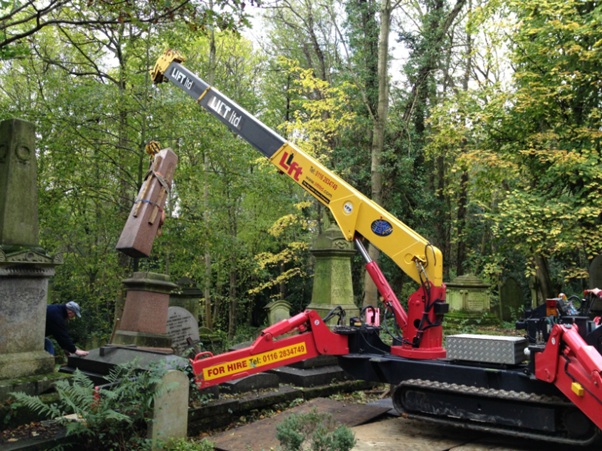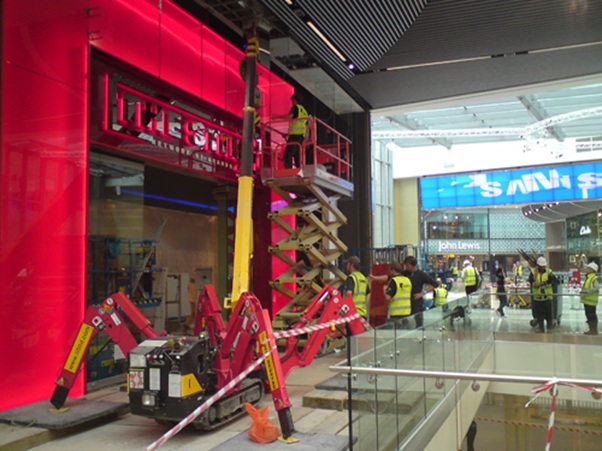The 7 most common uses for spider cranes
As built-up urban environments across the world continue to grow, so do the demands on construction workers to find ways of working in areas where space is at a premium.
Mini-cranes like spider cranes are fast becoming a natural solution to these increasingly complex construction challenges. Spider cranes are loved across the world as they are an ingenious way to heavy lift in areas too small to gain access with a larger crane.
More versatile than your average sized crane, mini-cranes are capable of tackling the most demanding of construction projects in environments such as slopes, stairs and tight, confined spaces.
From 1 ton spider cranes that will fit through standard sized doorways to 6 ton spider cranes that will reach up to 22 metres high and can still be positioned or tracked through the tightest of spaces, there’s a spider crane that can always meet the toughest of demands.
Here are the 7 most common uses for the versatile, powerful spider crane.
1. Confined and restricted spaces
This is where the spider crane really comes into its own. The spider crane can easily fold up and be tracked down tight corridors to reach an area with restricted access. In fact it’s known to frequently completed tough briefs in everywhere from art galleries to universities, museums, listed buildings and office blocks.
Need to lift sold steel in an area with limited headroom? It’s not a problem for a spider crane. A spider crane is the perfect tool if you require heavy lifting in between floors in a building, lifting anything from air conditioning units or wooden beams on to upper floors or dropping down lower levels.
The LIFT-094 is the smallest and most compact spider crane in our range and highly effective in confined space. Only 595mm wide and 1000kg in weight, it is the world’s smallest and lightest compact crane, ideal for manoeuvring into the tightest of working areas and capable of lifting almost a tonne with its 5.49m long boom and hook height of 5.6m.
2. Rooftop operations
When you need heavy lifting work done on a rooftop that can only sustain a certain amount of weight, then the spider crane comes in particularly useful. The TC 30 trailer mini crane is a good match for any roof top operation. It’s light weight and compact size paired with its 30 metre reach and 360 rotation, makes it the ideal choice for any rooftop job.
There have been instances in the past when spider cranes have lifted other dismantled spider cranes onto high rooftops to avoid road closures and minimise disruption – now that’s impressive!
3. Plant maintenance
A spider crane is ideal for production plant work. Not only will it deal well in the cramped conditions, it will also move and lift at seemingly impossible angles to get the job done. At 0.6m wide, the LIFT-095 is specifically designed for interior access and manoeuvres freely in tight spots. And if you add a searcher hook attachment, you can easily use the crane to access those hard to reach areas.
4. Glass installation
Installing large sheets of glass is a delicate operation so when precision and finesse is needed, a spider crane is the only thing that will do. A spider crane will go beyond simply installing glass on a shop front. The special glass lifting vacuum attachment and lengthy boom reach means it can reach around the edges of buildings where access can be restricted. Lifting and installing glass in a canopy area with limited headroom is also something that a spider crane does very well that a larger crane can’t touch.
Spider cranes have been known to conquer the toughest exterior and interior office glazing jobs. One job in particular featuring a spider crane involved installing glazing in a gap of just 4 metres, separating office buildings from a nearby Metro line.
5. Stone work
A spider crane can meet a range of projects involving stone, from domestic to commercial. Capable of lifting and repairing the largest of stones and concrete, a spider crane can be used on difficult landscape projects to lifting stone in a cemetery to repair headstones and monuments. Spider cranes are also just as effective when a lighter touch is required. By adding a fly jib attachment spider crane can skilfully and carefully lift precious stonework on listed buildings to high profile statues.
6. Steel work
Spider cranes are the best choice for working with steel whenever the ground below is unable to withstand the weight of a larger crane. For installing steel staircases indoors then the spider crane is the perfect answer. With a 6 tonne capacity at 3m and a hook height of 19.5m, the LIFT-706 is powerful yet light enough to meet the demands of any steel job, and at just 1600mm wide is still narrow enough to gain access through a standard double doorway.
7. Shopping mall installations
Thanks to their lifting strength and compact size, spider cranes are often used for working inside shopping malls and retail stores. Whether it’s an installation or a refurb with glass or with cladding, spider cranes are great for the job as they easily fit through single doors to lift heavy displays.
Spider cranes have been used in a number of the UK’s major shopping centres for glazing and construction work, such as Selfridges on Oxford Street in London, The Bullring in Birmingham, Trinity in Leeds and the Westfield shopping centres in Stratford London and Bradford.
Thanks to http://www.liftminicranehire.co.uk for supplying this guest post.







